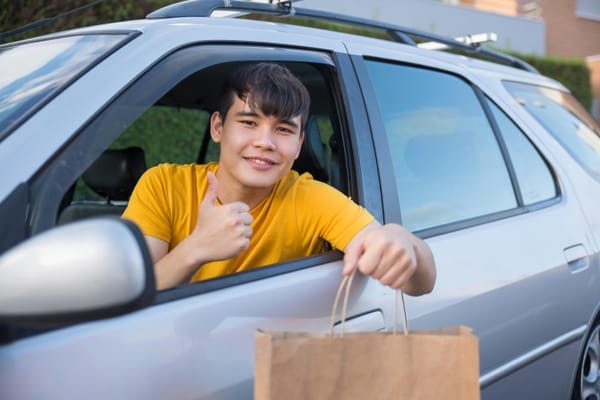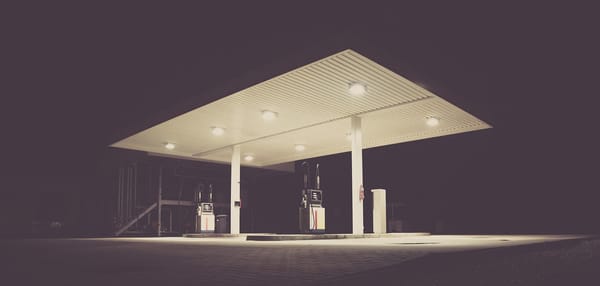DoorDash vs. Uber Eats: 10 tips to find out which app is best for drivers

In the rapidly growing world of food delivery apps, DoorDash and Uber Eats stand out as two of the most popular platforms. For drivers looking to enter the gig economy, choosing between these delivery services can significantly impact their earnings and work experience. This comprehensive comparison will delve into 10 crucial areas to help you determine which app is best suited for drivers.
Driver requirements
Both DoorDash and Uber Eats have specific requirements for their drivers, but there are some notable differences:
DoorDash:
- Minimum age: 18 years old
- Valid driver's license
- Auto insurance (if using a car)
- Social security number
- Clean driving record
- Smartphone compatible with the DoorDash app (Minimum requirements: Android 5.0 (Lollipop) or later, iOS 12 or later. / RAM: at least 2GB / Storage: at least 16GB).
Uber Eats:
- Minimum age: 19 years old (21 in some cities)
- Valid driver's license
- Proof of residency in your city/state
- At least one year of licensed driving experience (3 years if under 23)
- Clean driving record
- Smartphone compatible with the Uber Driver app (Minimum requirements: Android 5.0 (Lollipop) or later, iOS 12 or later. RAM: at least 2GB Storage: at least 16GB).
While both services have similar basic requirements, Uber Eats tends to be slightly more stringent, particularly regarding age and driving experience.
Vehicle requirements
The vehicle requirements for both platforms are relatively flexible, accommodating various transportation methods:
DoorDash:
- Any reliable vehicle (car, scooter, or bicycle)
- No specific year or model restrictions
- Must have current registration and insurance
Uber Eats:
- Car (2-door or 4-door), scooter, or bicycle
- Vehicle must be in good condition
- No specific year restrictions, but must meet local requirements
- Current registration and insurance
Both services allow for a range of vehicle types, making it easier for drivers to get started. However, Uber Eats may have stricter vehicle condition standards in some areas. If you're considering becoming a delivery driver but don't have a suitable vehicle, companies like HyreCar offer short and long-term rental solutions specifically designed for professional drivers. This can be an excellent way to get started in the food delivery business without the upfront cost of purchasing a vehicle. Here are some benefits of using HyreCar:
- Flexible rentals: HyreCar offers flexible rental periods, allowing you to rent a vehicle for as long as you need, whether it’s for a few days, weeks, or months.
- Insurance included: HyreCar rentals come with insurance coverage, so you don’t have to worry about additional insurance costs.
- Variety of vehicles: You can choose from a wide range of vehicles that meet Uber and DoorDash’’s requirements, ensuring you have a reliable car for your deliveries.
By using HyreCar, you can start delivering without the need to own your own vehicle, making it easier to get started and earn money. Check out our platform and view available cars near you!
3. Sign up process and onboarding
The sign up and onboarding processes for both platforms are designed to be straightforward, but there are some differences:
DoorDash:
- Online application
- Background check
- Vehicle information submission
- Activation kit delivery (includes red card for payments and insulated bag)
- Brief orientation (usually online)
Uber Eats:
- Online application
- Background check
- Vehicle information submission
- Document verification (may require in-person visit)
- App activation
DoorDash's process is generally quicker, with most drivers able to start within a week. Uber Eats may take longer due to more thorough document verification, but this can vary by location.
4. Delivery rules
Understanding the delivery rules is crucial for drivers to maximize their earnings and maintain a good standing with the platform:
DoorDash:
- Drivers can see the estimated payout and distance before accepting an order
- Option to decline orders without direct penalty (but may affect overall acceptance rate)
- Drivers are responsible for picking up and delivering food
- Some orders may require the use of the red card for payment
Uber Eats:
- Drivers can see estimated time and general direction, but not always the exact payout before accepting
- Declining orders may affect the driver's status and future order priority
- Drivers pick up and deliver food, with some restaurants requiring order placement
Both platforms allow drivers to work flexible hours, but DoorDash offers more transparency in order details before acceptance.
5. Scheduling management
The ability to manage schedules effectively can greatly impact a driver's earning potential:
DoorDash:
- Offers scheduled shifts ("Dash Now" feature)
- Early access to prime time slots for top-rated dashers
- Ability to work outside scheduled hours when demand is high
Uber Eats:
- No pre-scheduling required
- Drivers can go online and offline at will
- Surge pricing during peak hours incentivizes working during busy times
DoorDash's scheduling system can provide more structure and potentially more consistent work, while Uber Eats offers greater flexibility for drivers who prefer a more spontaneous approach.
6. Payment model and average earnings
Understanding the payment structure is crucial for drivers to maximize their income:
DoorDash:
- Base pay + promotions + 100% of tips
- Base pay ranges from $2-$10 per delivery
- Drivers can see the minimum guaranteed amount before accepting an order
- Weekly payouts with option for daily deposits (for a fee)
Uber Eats:
- Base fare + trip supplement + promotions + 100% of tips
- Earnings based on pickup, drop-off, time, and distance
- Surge pricing during peak hours can significantly boost earnings
- Weekly payouts with option for instant pay (up to 5 times per day)
Average earnings can vary widely depending on location, time of day, and driver strategy. However, both platforms offer the potential for drivers to earn between $15-$25 per hour before expenses.
7. Incentives and bonuses
Both DoorDash and Uber Eats offer various incentives to motivate drivers:
DoorDash:
- Peak pay during busy hours
- Challenge bonuses for completing a set number of deliveries
- Top Dasher program with perks for high-performing drivers
Uber Eats:
- Surge pricing during high-demand periods
- Quest promotions for completing a certain number of trips
- Boost multipliers in specific areas at certain times
While both platforms offer incentives, Uber Eats' surge pricing model can lead to higher short-term earnings in busy areas, while DoorDash's Top Dasher program may provide more consistent benefits for regular drivers.
8. App layout and feature
A user-friendly app can significantly improve the driving experience. Check out a few of the differences below.
DoorDash:
- Clean, intuitive interface
- Real-time tracking of earnings
- In-app navigation
- Easy communication with customers and support
Uber Eats:
- Sleek, modern design
- Integrated map with real-time traffic updates
- Earnings tracker with detailed breakdown
- Seamless switching between Uber rideshare and Eats deliveries (if applicable)
Both apps are well-designed, but Uber Eats may have a slight edge in terms of map integration and real-time updates.
9. Customer and driver support
Customer and driver support is a crucial aspect of the food delivery experience. Both DoorDash and Uber Eats offer support channels to assist users. These effective support systems are essential for resolving issues quickly and ensuring a smooth experience:
DoorDash:
- Driver Support: In-app support chat available 24/7, dedicated support phone line for urgent issues, and a comprehensive help center with FAQs and troubleshooting guides.
- Customer Support: Multiple channels including in-app messaging, phone support, and email. Support is available for both customers and drivers to address issues like order problems or payment inquiries.
- Resolution Time: Generally responsive with average resolution times depending on the complexity of the issue. More immediate issues are often resolved through the in-app chat feature.
Uber Eats:
- Driver Support: In-app help section with real-time chat support, phone support available, and a detailed online help center. Uber Eats drivers can also access support through the Uber Driver app.
- Customer Support: Multiple contact methods including in-app messaging, phone support, and email. Uber Eats provides support for both customers and drivers to handle issues such as delivery problems or account concerns.
- Resolution Time: Known for relatively quick responses through chat and phone support, with the ability to escalate urgent issues if needed.
Both platforms provide robust support systems, but Uber Eats may offer more immediate resolutions due to its integrated chat and phone support options. DoorDash's support is also comprehensive, with a focus on ensuring issues are addressed effectively through its in-app chat and dedicated support lines.
10. Key differences
While both platforms share many similarities, there are some key differences that may influence a driver's choice:
- Market presence: DoorDash has a larger market share in the US, potentially offering more consistent work in some areas.
- Transparency: DoorDash provides more upfront information about orders, allowing drivers to make more informed decisions.
- Flexibility: Uber Eats offers greater flexibility in terms of when and where to work, with no need for pre-scheduling.
- Additional opportunities: Uber Eats drivers can often easily transition to Uber rideshare driving, providing an additional income stream.
- Payment structure: While both offer base pay plus tips, Uber Eats' surge pricing model can lead to higher earnings during peak times.
In conclusion, both DoorDash and Uber Eats offer viable opportunities for drivers in the food delivery industry. The best choice depends on individual preferences, location, and work style. DoorDash may be better for those who prefer more structure and transparency in their work, while Uber Eats could be ideal for drivers seeking maximum flexibility and the potential for surge earnings.
Remember, many drivers choose to work for both platforms to maximize their earning potential and take advantage of the strengths of each app. Whichever platform you choose, success as a delivery driver often comes down to understanding your local market, providing excellent customer service, and efficiently managing your time and resources.
>> Discover all you need to know to become an Uber Eats Driver



